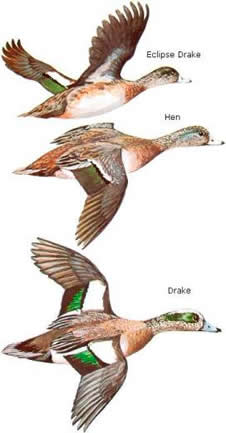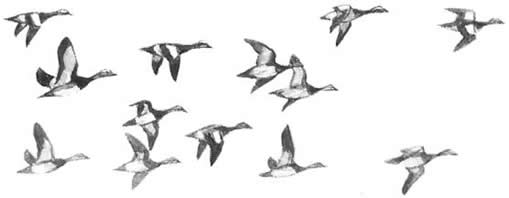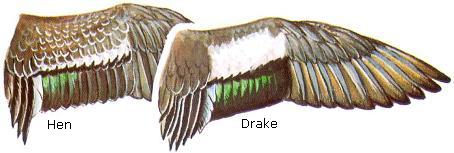Wildlife - Species

Species Specific Regulations
American Wigeon
Licenses: Hunting License required. Migratory Bird Hunting and Conservation Stamp (Federal Duck Stamp) that is validated by the hunter signing the stamp in ink across the face of the stamp
Limits: Please see Migratory Bird Regulations for any game zones restrictions or Limitations.
American Wigeon (Anas americana)

Description
The drake is a very distinct dabbler, with a white forehead and green eye stripe. Their white belly and forewing make them quite showy in flight.
Average Size
Wigeon have an average length of 21 inches and an average weight of 1 3/4 pounds.
Range
American wigeon can be found across all 4 flyways. During the winter months wigeon mainly inhabit South Carolina’s Coastal Plain region.
Preferred Habitat
Wigeon spend the summer months in shallow, freshwater wetlands including sloughs, ponds, marshes, small lakes, and rivers. Over the winter they are found in areas with large amounts of submergent and emergent vegetation. Examples of winter habitat include marshes, rivers, lakes, impoundments, estuaries, saltwater bays and agricultural areas.
Typical Flock Pattern

Wings

Food Habits
Wigeons have more vegetarian tendencies then other dabblers. In the winter months their diet is almost exclusively made up of stems and the leafy parts of aquatic plants, grasses, and crops. During the breeding season they increase their intake of seeds, fruits, insects, and crustaceans.
Reproduction
Breeding pairs begin to form before birds reach the wintering grounds and continues on through the winter. Once in the breeding grounds, the female builds her nest in tall grass or brush, often a distance from water. The female creates a slight depression and lines it with dry grass, weed stems, and down before laying 3-12 creamy white eggs.
Sound
Drakes whistle, and hens have a loud kaow and a lower qua-awk.
Behavior
- Nervous birds, quick to take alarm.
- Flight is fast, irregular, with many twists and turns.
- When open water is handy, wigeon often raft up offshore until late afternoon.
- Spend lots of their time on land.
- Males are territorial during the breeding season.
- Seldom found in large flocks.
- May intermingle with small flocks of gadwalls, mallards, American coots, and diving ducks.
Citations, Publications and Literature
U.S. Fish & Wildlife Service, Federal Duck Stamp Office Presents: North American Waterfowl (Adobe PDF file)
Mowbray, Thomas. 1999. American Wigeon (Anas americana), The Birds of North America Online (A. Poole, Ed.). Ithaca: Cornell Lab of Ornithology; Retrieved from the Birds of North America Online